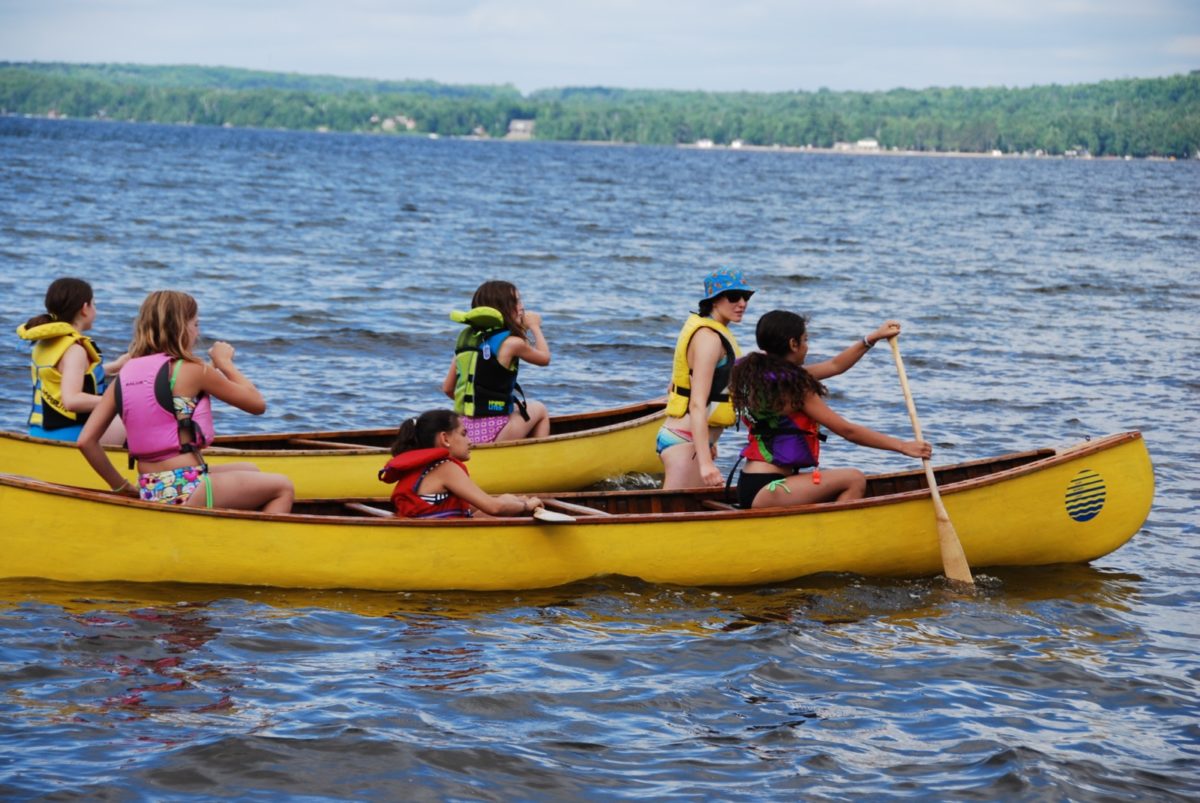As we approach 100 years of GBC, why do we still teach canoeing at camp? If you grew up at camp like I did, you will probably remember what it was like to learn how to canoe. Learning the strokes. Paddling from the bow. Paddling from the stern. Learning how to land your canoe at the dock without smashing the dock (ok, I smashed it a few times). Gritting teeth and dipping the paddle into the water and pushing that blade with all your might. Did you think, as some campers do now, that it was boring?
What really happens as you paddle, for example on a canoe trip in Algonquin Park or on a river in Temagami? Amazing things!
1. Thinking. With a beautiful natural landscape and nothing but time, you think. Maybe it is about an issue you are trying to resolve. Perhaps it is thinking about the upcoming school year. Maybe it is about the latest episode of Keeping up with the Kardashians! Regardless, what a gift, this time and space is to choose your thoughts.
2. Conversation. The opportunity to spend time in a canoe with others affords you the time to share. These conversations can be deep and meaningful, or they can be without any substance at all. The beauty of it is that we are talking without the use of technology. Hugely important for youth (and adults too!).
3. Conflict resolution. Have you ever had to paddle in a straight line on on a windy day with someone who you feel isn’t pulling their weight or is lily dipping (gasp! ha)? How you accomplish your paddling goal depends on your ability to work through challenges. What words are you going to use to get more power from the bow paddler? What is your tone? Did you achieve your desired outcome of working together, or did you make your fellow paddler mad so now they are doing even less? These lessons cannot be underestimated.
4. Immersing in nature. Being on the water in a canoe you get to see nature from a different perspective. Watching the water as you pull your paddle through, you notice the tornado that forms in the water, close to the surface. You notice the cloud formations and create a weather forecast in your mind. You follow the water’s edge with your eyes and see trees growing out of rocks. If you are lucky, you see a majestic moose at the shoreline. You pay attention to the direction of the wind and how it affects your boat.
5. Accomplishment. After a long day of canoeing and perhaps portaging on trip, there is no better feeling than the tired, sore muscle sense of accomplishment. You made it.
Canoeing is integral to the camping industry. It is steeped in our history. It is a commitment to the environment through a zero-footprint form of transportation. It is an incredible way for campers to learn about themselves and each other.
We are proud of our yellow canoes and very proud of the campers and staff who enjoy paddling them.

